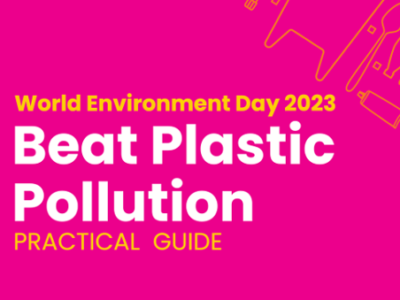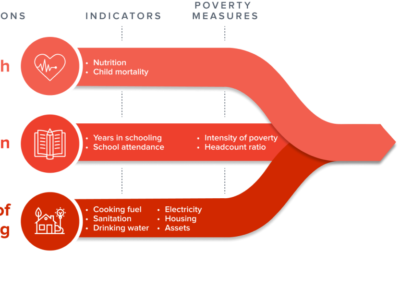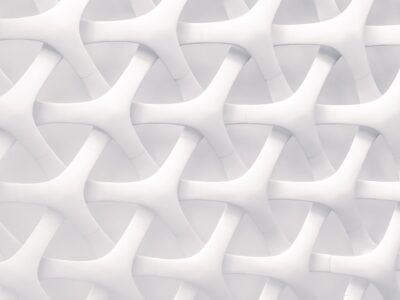Our grandparents’ generation created an amazing system of canals and reservoirs that made it possible for people to live in places where there wasn’t a lot of water. For example, during the Great Depression, they created the Hoover Dam, which in turn, created Lake Mead and made it possible for the cities of Las Vegas and Phoenix and Los Angeles to provide water for people who lived in a really dry place.
In the 20th century, we literally spent trillions of dollars building infrastructure to get water to our cities. In terms of economic development, it was a great investment. But in the last decade, we’ve seen the combined effects of climate change, population growth and competition for water resources threaten these vital lifelines and water resources.
The figure shows you the change in the lake level of Lake Mead that happened in the last 15 years. You can see starting around the year 2000, the lake level started to drop. And it was dropping at such a rate that it would have left the drinking water intakes for Las Vegas high and dry. The city became so concerned about this that they recently constructed a new drinking water intake structure that they referred to as the “Third Straw” to pull water water out of the greater depths of the lake.
The challenges associated with providing water to a modern city are not restricted to the American Southwest. In the year 2007, the third largest city in Australia, Brisbane, came within 6 months of running out of water. A similar drama is playing out today in São Paulo, Brazil, where the main reservoir for the city has gone from being completely full in 2010, to being nearly empty today as the city approaches the 2016 Summer Olympics.
For those of us who are fortunate enough to live in one of the world’s great cities, we’ve never truly experienced the effects of a catastrophic drought. We like to complain about the navy showers we have to take. We like our neighbours to see our dirty cars and our brown lawns. But we’ve never really faced the prospect of turning on the tap and having nothing come out. And that’s because when things have gotten bad in the past, it’s always been possible to expand a reservoir or dig a few more groundwater wells. Well, in a time when all of the water resources are spoken for, it’s not going to be possible to rely on this tried and true way of providing ourselves with water.
Some people think that we’re going to solve the urban water problem by taking water from our rural neighbours. But that’s an approach that’s fraught with political, legal and social dangers. And even if we succeed in grabbing the water from our rural neighbours, we’re just transferring the problem to someone else and there’s a good chance it will come back and bite us in the form of higher food prices and damage to the aquatic ecosystems that already rely upon that water.
I think that there’s a better way to solve our urban water crisis and I think that’s to open up four new local sources of water that I liken to faucets. If we can make smart investments in these new sources of water in the coming years, we can solve our urban water problem and decrease the likelihood that we’ll ever run across the effects of a catastrophic drought.
Now, if you told me 20 years ago that a modern city could exist without a supply of imported water, I probably would have dismissed you as an unrealistic and uninformed dreamer. But my own experiences working with some of the world’s most water-starved cities in the last decades have shown me that we have the technologies and the management skills to actually transition away from imported water, and that’s what I want to tell you about tonight.
The first source of local water supply that we need to develop to solve our urban water problem will flow with the rainwater that falls in our cities. One of the great tragedies of urban development is that as our cities grew, we started covering all the surfaces with concrete and asphalt. And when we did that, we had to build storm sewers to get the water that fell on the cities out before it could cause flooding, and that’s a waste of a vital water resource. Let me give you an example.
This figure here shows you the volume of water that could be collected in the city of San Jose if they could harvest the stormwater that fell within the city limits. You can see from the intersection of the blue line and the black dotted line that if San Jose could just capture half of the water that fell within the city, they’d have enough water to get them through an entire year.
Now, I know what some of you are probably thinking. “The answer to our problem is to start building great big tanks and attaching them to the downspouts of our roof gutters, rainwater harvesting.” Now, that’s an idea that might work in some places. But if you live in a place where it mainly rains in the winter time and most of the water demand is in the summertime, it’s not a very cost-effective way to solve a water problem. And if you experience the effects of a multiyear drought, like California’s currently experiencing, you just can’t build a rainwater tank that’s big enough to solve your problem.
I think there’s a lot more practical way to harvest the stormwater and the rainwater that falls in our cities, and that’s to capture it and let it percolate into the ground. After all, many of our cities are sitting on top of a natural water storage system that can accommodate huge volumes of water.
For example, historically, Los Angeles has obtained about a third of its water supply from a massive aquifer that underlies the San Fernando Valley. Now, when you look at the water that comes off of your roof and runs off of your lawn and flows down the gutter, you might say to yourself, “Do I really want to drink that stuff?” Well, the answer is you don’t want to drink it until it’s been treated a little bit. And so the challenge that we face in urban water harvesting is to capture the water, clean the water and get it underground.
And that’s exactly what the city of Los Angeles is doing with a new project that they’re building in Burbank, California. This figure here shows the stormwater park that they’re building by hooking a series of stormwater collection systems, or storm sewers, and routing that water into an abandoned gravel quarry. The water that’s captured in the quarry is slowly passed through a man-made wetland, and then it goes into that ball field there and percolates into the ground, recharging the drinking water aquifer of the city.
And in the process of passing through the wetland and percolating through the ground, the water encounters microbes that live on the surfaces of the plants and the surfaces of the soil, and that purifies the water. And if the water’s still not clean enough to drink after it’s been through this natural treatment process, the city can treat it again when they pump if back out of the groundwater aquifers before they deliver it to people to drink.
The second tap that we need to open up to solve our urban water problem will flow with the wastewater that comes out of our sewage treatment plants. Now, many of you are probably familiar with the concept of recycled water. You’ve probably seen signs like this that tell you that the shrubbery and the highway median and the local golf course is being watered with water that used to be in a sewage treatment plant. We’ve been doing this for a couple of decades now. But what we’re learning from our experience is that this approach is much more expensive that we expected it to be. Because once we build the first few water recycling systems close to the sewage treatment plant, we have to build longer and longer pipe networks to get that water to where it needs to go. And that becomes prohibitive in terms of cost.
What we’re finding is that a much more cost-effective and practical way of recycling wastewater is to turn treated wastewater into drinking water through a two-step process. In the first step in this process, we pressurise the water and pass it through a reverse osmosis membrane: a thin, permeable plastic membrane that allows water molecules to pass through but traps and retains the salts, the viruses and the organic chemicals that might be present in the wastewater.
In the second step in the process, we add a small amount of hydrogen peroxide and shine ultraviolet light on the water. The ultraviolet light cleaves the hydrogen peroxide into two parts that are called hydroxyl radicals, and these hydroxyl radicals are very potent forms of oxygen that break down most organic chemicals.
After the water’s been through this two-stage process, it’s safe to drink. I know, I’ve been studying recycled water using every measurement technique known to modern science for the past 15 years. We’ve detected some chemicals that can make it through the first step in the process, but by the time we get to the second step, the advanced oxidation process, we rarely see any chemicals present. And that’s in stark contrast to the taken-for-granted water supplies that we regularly drink all the time.
There’s another way we can recycle water. This is an engineered treatment wetland that we recently built on the Santa Ana River in Southern California. The treatment wetland receives water from a part of the Santa Ana River that in the summertime consists almost entirely of wastewater effluent from cities like Riverside and San Bernardino. The water comes into our treatment wetland, it’s exposed to sunlight and algae and those break down the organic chemicals, remove the nutrients and inactivate the waterborne pathogens. The water gets put back in the Santa Ana River, it flows down to Anaheim, gets taken out at Anaheim and percolated into the ground, and becomes the drinking water of the city of Anaheim, completing the trip from the sewers of Riverside County to the drinking water supply of Orange County.
Now, you might think that this idea of drinking wastewater is some sort of futuristic fantasy or not commonly done. Well, in California, we already recycle about 40 billion gallons a year of wastewater through the two-stage advanced treatment process I was telling you about. That’s enough water to be the supply of about a million people if it were their sole water supply.
The third tap that we need to open up will not be a tap at all, it will be a kind of virtual tap, it will be the water conservation that we manage to do. And the place where we need to think about water conservation is outdoors because, in California and other modern American cities, about half of our water use happens outdoors.
In the current drought, we’ve seen that it’s possible to have our lawns survive and our plants survive with about half as much water. So there’s no need to start painting concrete green and putting in Astroturf and buying cactuses. We can have California-friendly landscaping with soil moisture detectors and smart irrigation controllers and have beautiful green landscapes in our cities.
The fourth and final water tap that we need to open up to solve our urban water problem will flow with desalinated seawater. Now, I know what you probably heard people say about seawater desalination. “It’s a great thing to do if you have lots of oil, not a lot of water and you don’t care about climate change.” Seawater desalination is energy-intensive no matter how you slice it. But that characterization of seawater desalination as being a nonstarter is hopelessly out of date. We’ve made tremendous progress in seawater desalination in the past two decades.
This picture shows you the largest seawater desalination plant in the Western hemisphere that’s currently being built north of San Diego. Compared to the seawater desalination plant that was built in Santa Barbara 25 years ago, this treatment plant will use about half the energy to produce a gallon of water.
But just because seawater desalination has become less energy-intensive, doesn’t mean we should start building desalination plants everywhere. Among the different choices we have, it’s probably the most energy-intensive and potentially environmentally damaging of the options to create a local water supply.
So there it is. With these four sources of water, we can move away from our reliance on imported water. Through reform in the way we landscape our surfaces and our properties, we can reduce outdoor water use by about 50 percent, thereby increasing the water supply by 25 percent. We can recycle the water that makes it into the sewer, thereby increasing our water supply by 40 percent. And we can make up the difference through a combination of stormwater harvesting and seawater desalination.
So, let’s create a water supply that will be able to withstand any of the challenges that climate change throws at us in the coming years. Let’s create a water supply that uses local sources and leaves more water in the environment for fish and for food. Let’s create a water system that’s consistent without environmental values. And let’s do it for our children and our grandchildren and let’s tell them this is the system that they have to take care of in the future because it’s our last chance to create a new kind of water system.
David Sedlak is a civil and water resources engineer whose research focuses on the long-term goal of developing cost-effective, safe and sustainable systems to manage water resources.






